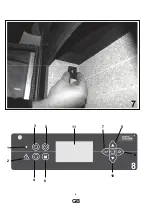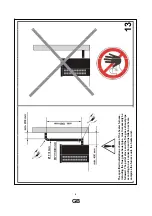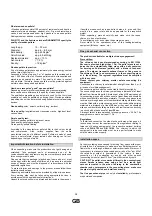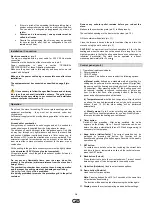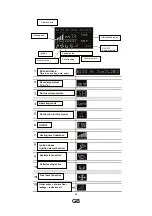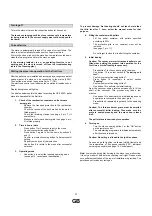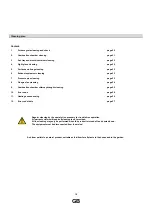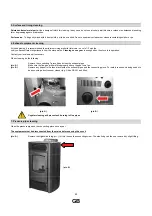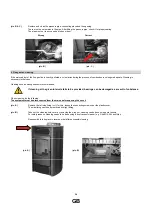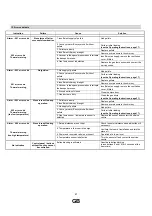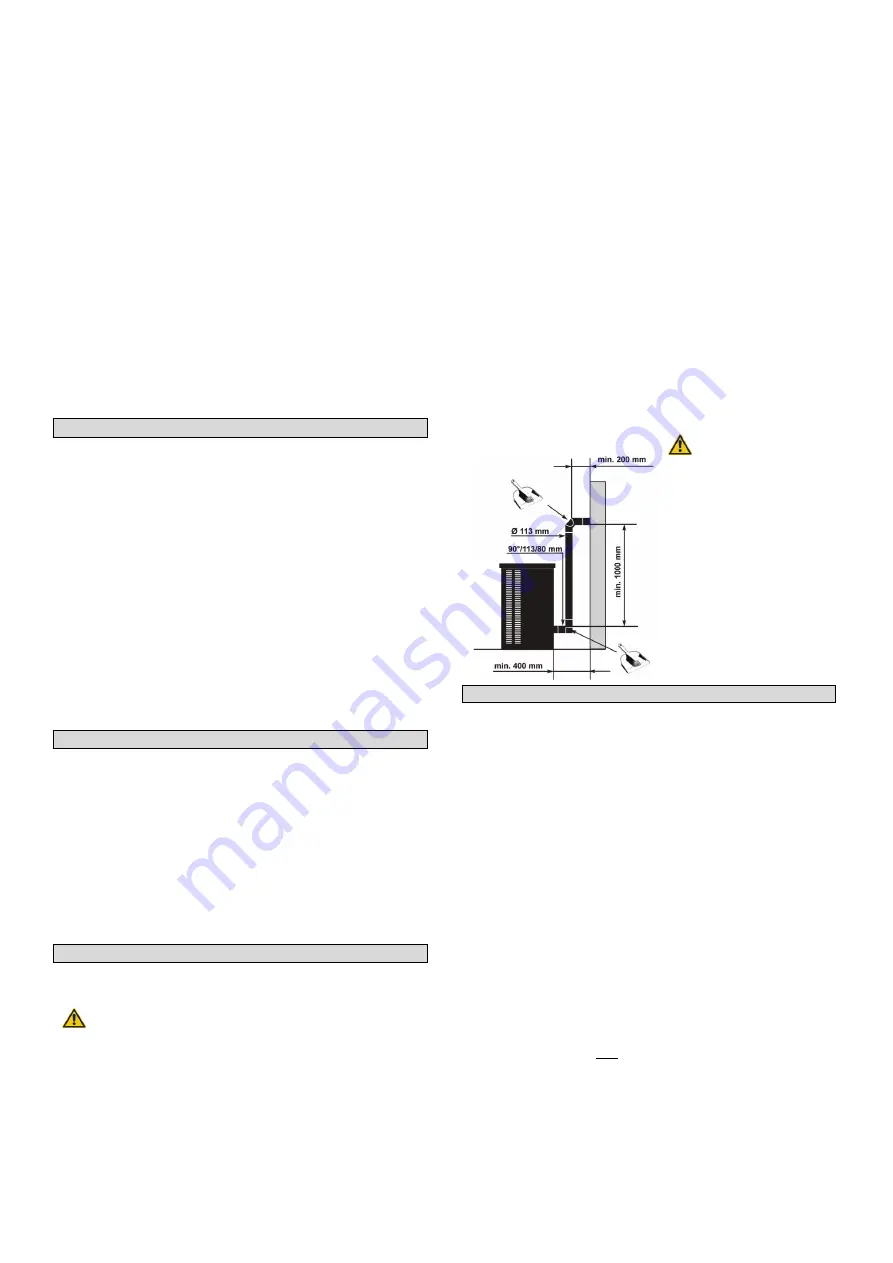
13
The equipment must be installed in a way to make sure nothing
needs to be disassembled for regular cleaning.
Pipes must
always
be sealed with silicon (
no cement
) as this
material is resistant to heat and maintains its flexibility even at high
temperatures (250°C). They are fixated with 3.9 mm self-tapping
screws.
a. No flaps or doors that could prevent the exhaust of flue
gases
may be
fitted.
b. The equipment must be connected in a way described on
page 8 (pic. 13).
Pipes and their maximum length
It is possible to use pipes made of painted steel (minimum thickness
of 1.5 mm), high-quality steel or porcelain-enamelled steel (minimum
thickness of 0.5 mm) with a diameter of
100 mm.
Outdoor air supply
The stove must have a sufficient amount of air to be able to
guarantee its proper function. This is provided by a supply of air
outside the space where the stove is installed.
Outdoor air may only be supplied after an agreement with a sweep.
•
Air supply must be connected directly with the outdoor, with
metal pipes (at least 80 mm) with adequate silicon sealing
guaranteeing proper sealing being necessary to be used.
•
Air supply can also be provided from the next room where the
stove stands, provided it is not through lockable openings
connected with the outdoor.
•
In the room next to the one where the stove is to be installed
there must be no vacuum with respect to the outdoor as a result
of back draught caused by an exhaust system installed there
(steam exhaust, clothes dryer, etc.). The permanent openings
in the next room must meet the criteria above. Moreover, such
room must not be used as a garage or storage of flammable
substances and no activities creating a risk of fire may be
performed in that room.
Minimum safety distances (pic. 9)
The minimum safety distances from flammable materials or materials
sensitive to temperatures and from carrying walls < 10cm:
A
40 cm from the back wall;
B
30 cm from side walls;
C
80 cm in the radiation range.
Floor protection (e.g. steel plates), marble or tiles must be used for
flammable or temperature-sensitive flooring.
Minimum dimensions are:
D
50 cm;
E
30 cm (from the inner edge of the combustion chamber opening).
Side distance of 60 cm is recommended to make sure checking and
servicing parts in the stove is possible.
Preventing fire in a house
The stove must be installed and operated in accordance with the
details of the manufacturer and local regulations.
CAUTION: If any pipe is led through a wall or ceiling, some
specifics must be considered for installation (insulation,
protective equipment, sufficient distance from materials
sensitive to high temperatures, etc.)
•
Connecting tube The connection pipe to the chimney must
never lead through a flammable material or flammable surfaces.
•
Connecting tube The connection pipe to the chimney must not
be connected to the smoke pipe connected with any other
equipment.
•
All flammable or combustible materials such as wooden beams,
wooden furniture, curtains, flammable liquids are recommended
to be kept in a safe distance (at least one meter) from the
thermal radiation and from the stove.
•
If there are any wooden ceilings or other coverings made of
flammable or heat-sensitive materials nearby, a protective layer
of insulating non-combustible material must be laid. If the floor
is made of a combustible material (wooden boards, parquets), a
protective plate made of non-combustible material must be
placed at the stove door height level. The plate will protrude at
least 30 cm to the side and at least 50 cm to the front.
More information is given by local regulations.
The combustion chamber must not in any case be opened
during operation.
It is necessary to follow
the specified installation
scheme of the heater
furnace including gas fumes
exhaust pipes (chimney
tubes) and flue gas exhaust
pipes. The pellet stove and
gas fumes exhaust pipes
comprise the furnace unit
according to our connection
and installation scheme.
What to do in case of fire in the chimney
Fire initiators
The causes of uncontrolled fire in a chimney are different:
•
Strong wind can blow up the burning material so the
flames are higher than usual.
•
Burning material not suitable for a furnace or material that
is not expected.
•
Burning material with a long flame (e.g. coniferous wood)
blows up fire.
•
Lack of oxygen. Fuel in the combustion chamber does not
burn completely as a result of imperfect burning. Additional
combustion then takes place in the chimney.
Fire removal
Fire in a chimney must not be extinguished with water as vapour
would immediately be created inside (water evaporates in the
1:1,700 ratio at 100°C), which would seriously damage the chimney
or even cause explosion as a result of increased pressure.
Fire removal options:
•
Let the chimney burn down in a controlled manner, i.e.
under permanent supervision, with air condition being
possible to be controlled to some extent by the chimney
door or stove.
•
Have burning soot removed (knocked out) using a tool of a
sweep and extinguished outside.
GB
Summary of Contents for 68032
Page 3: ...3 2 1 D ...
Page 4: ...4 3 4 a b a D ...
Page 5: ...5 5 6 D ...
Page 6: ...6 7 8 1 2 4 6 10 8 9 7 11 5 3 D ...
Page 7: ...7 9 10 D ...
Page 8: ...8 11 12 12 D ...
Page 9: ...9 13 D ...
Page 15: ...15 D ...
Page 29: ...3 2 1 GB ...
Page 30: ...4 3 4 a b a GB ...
Page 31: ...5 5 6 GB ...
Page 32: ...6 7 8 1 2 4 6 10 8 9 7 11 5 3 GB ...
Page 34: ...8 12 11 GB ...
Page 42: ...16 On Off Temperature mode Down Keep mode deactivation Manual mode Up Keep button GB ...
Page 55: ...3 2 1 F ...
Page 56: ...4 3 4 a b a F ...
Page 57: ...5 5 6 F ...
Page 58: ...6 7 8 1 2 4 6 10 8 9 7 11 5 3 F ...
Page 59: ...7 9 10 F ...
Page 60: ...8 11 12 12 F ...
Page 67: ...15 F ...
Page 81: ...3 2 1 I ...
Page 82: ...4 3 4 a b a I ...
Page 83: ...5 5 6 I ...
Page 84: ...6 7 8 1 2 4 6 10 8 9 7 11 5 3 I ...
Page 86: ...8 12 11 I ...
Page 107: ...3 2 1 CZ ...
Page 108: ...4 3 4 a b a CZ ...
Page 109: ...5 5 6 CZ ...
Page 110: ...6 7 8 1 2 4 6 10 8 9 7 11 5 3 CZ ...
Page 112: ...8 11 12 CZ ...
Page 133: ...3 2 1 SK ...
Page 134: ...4 3 4 a b a SK ...
Page 135: ...5 5 6 SK ...
Page 136: ...6 7 8 1 2 4 6 10 8 9 7 11 5 3 SK ...
Page 138: ...8 12 11 SK ...
Page 159: ...3 2 1 H ...
Page 160: ...4 3 4 a b a H ...
Page 161: ...5 5 6 H ...
Page 162: ...6 7 8 1 2 4 6 10 8 9 7 11 5 3 H ...
Page 164: ...8 11 12 H ...
Page 185: ...3 2 1 P ...
Page 186: ...4 3 4 a b a P ...
Page 187: ...5 5 6 P ...
Page 188: ...6 7 8 1 2 4 6 10 8 9 7 11 5 3 P ...
Page 190: ...8 12 11 P ...








